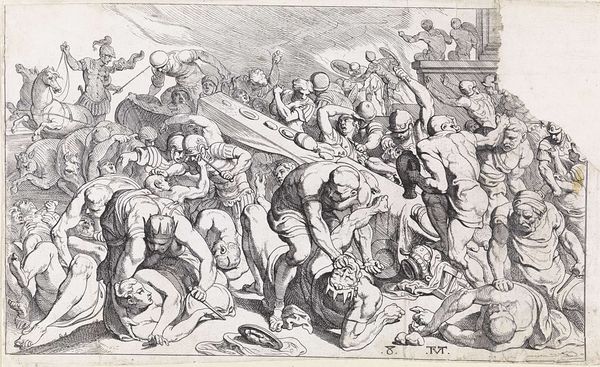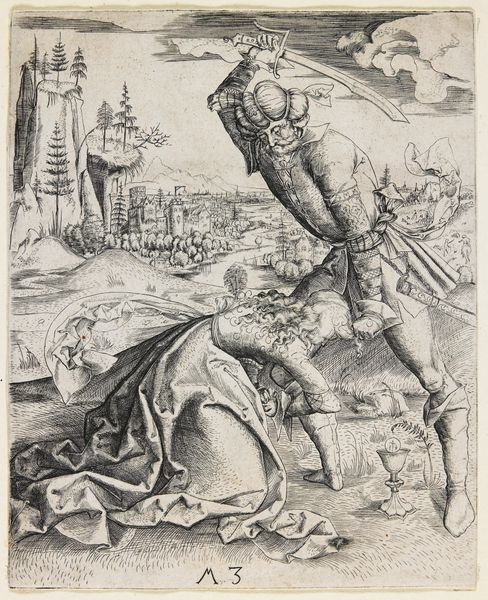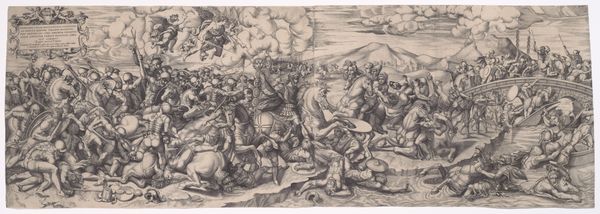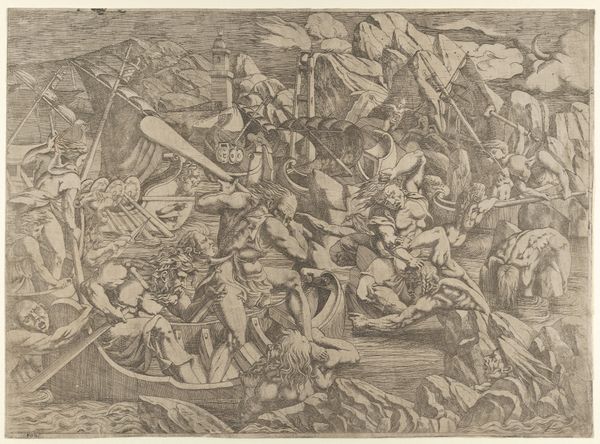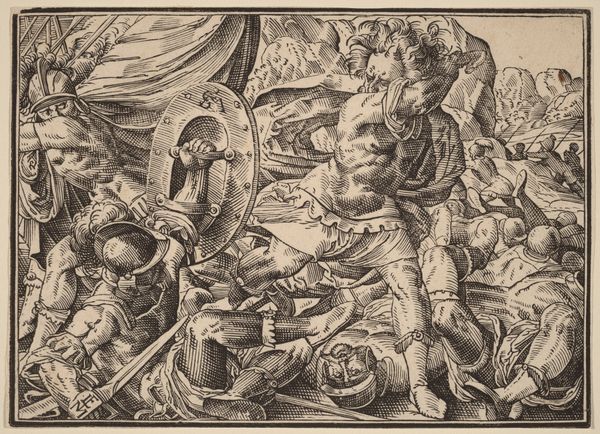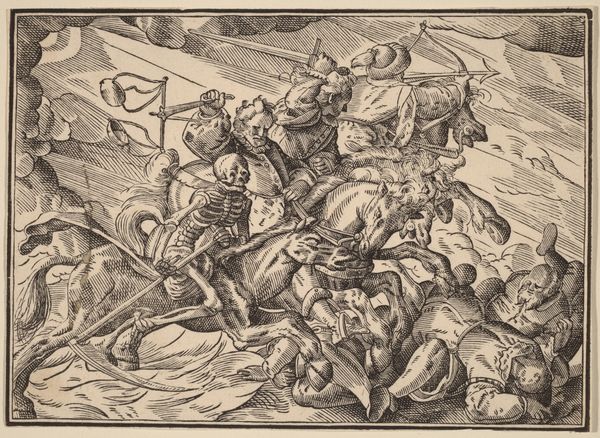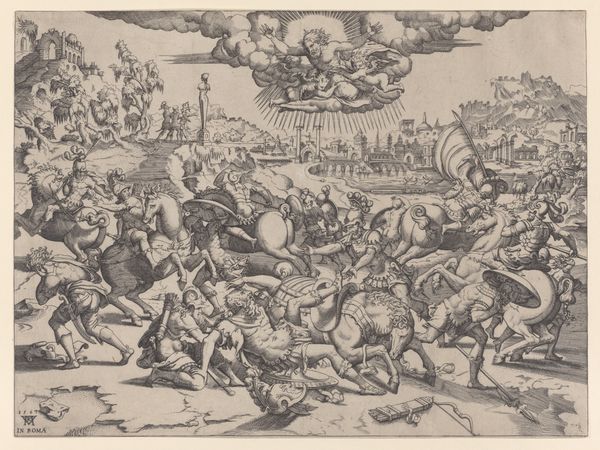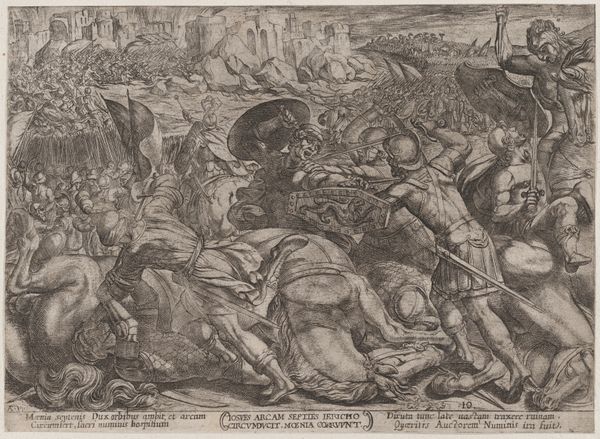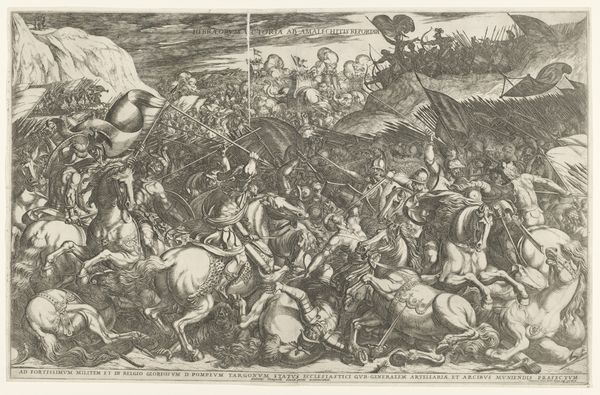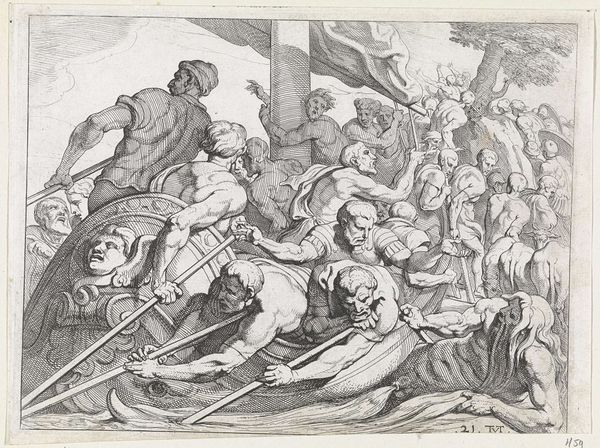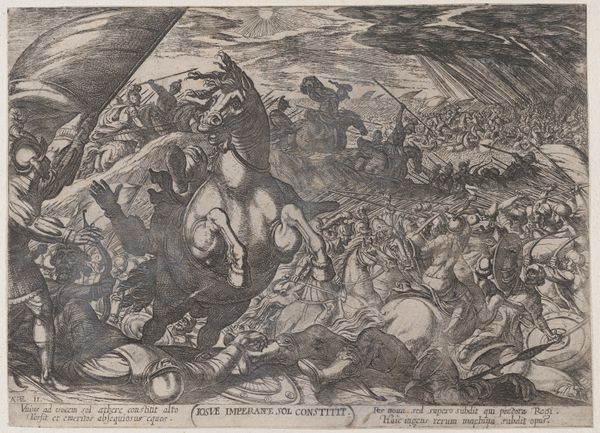
drawing, print, engraving
#
drawing
# print
#
11_renaissance
#
history-painting
#
northern-renaissance
#
engraving
Dimensions: 78 × 114 mm (sheet)
Copyright: Public Domain
Georg Pencz made this print, "The Conversion of St. Paul", sometime between 1500 and 1550 using the intaglio process of engraving. Here, a design is incised into a metal plate, which is then inked and pressed onto paper. The incised lines hold the ink, creating the image. The density of the lines determines the areas of light and shadow. Take a close look, and you’ll notice the artist has used hatching and cross-hatching to build up tone. The quality of the engraved line is determined by the skill of the engraver. Pencz trained in the workshop of Albrecht Dürer, a master printmaker. This print wouldn't have been considered high art at the time. Instead, it would have been seen as a form of accessible image-making, part of a booming industry of printmaking in the 16th century. These prints spread ideas, stories, and styles, fueling the engine of cultural exchange. By focusing on Pencz's labor, the choice of materials and techniques, we see how the print exists within broader economic and social networks.
Comments
No comments
Be the first to comment and join the conversation on the ultimate creative platform.
